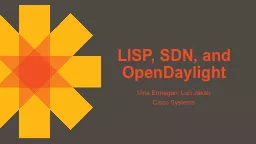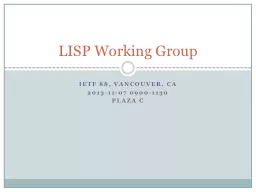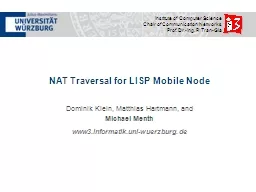PPT-LISP 1.5 and beyond
Author : jane-oiler | Published Date : 2016-05-24
A very quick tour Data Atoms symbols including numbers All types of numbers including Roman well in the early days Syntactically any identifier of alphanumerics
Presentation Embed Code
Download Presentation
Download Presentation The PPT/PDF document "LISP 1.5 and beyond" is the property of its rightful owner. Permission is granted to download and print the materials on this website for personal, non-commercial use only, and to display it on your personal computer provided you do not modify the materials and that you retain all copyright notices contained in the materials. By downloading content from our website, you accept the terms of this agreement.
LISP 1.5 and beyond: Transcript
Download Rules Of Document
"LISP 1.5 and beyond"The content belongs to its owner. You may download and print it for personal use, without modification, and keep all copyright notices. By downloading, you agree to these terms.
Related Documents












![[eBOOK]-Controlling AutoCAD from Visual LISP Release 2019 edition. (AutoCAD expert\'s](https://thumbs.docslides.com/970935/ebook-controlling-autocad-from-visual-lisp-release-2019-edition-autocad-expert-s-visual-lisp-book-2.jpg)
![[BEST]-LISP Network Deployment and Troubleshooting: The Complete Guide to LISP Implementation](https://thumbs.docslides.com/974058/best-lisp-network-deployment-and-troubleshooting-the-complete-guide-to-lisp-implementation-on-ios-xe-ios-xr-and-nx-os-networking-technology.jpg)
![[BEST]-Controlling AutoCAD from Visual LISP: Release 2019 edition. (AutoCAD expert\'s](https://thumbs.docslides.com/974124/best-controlling-autocad-from-visual-lisp-release-2019-edition-autocad-expert-s-visual-lisp-book-2.jpg)